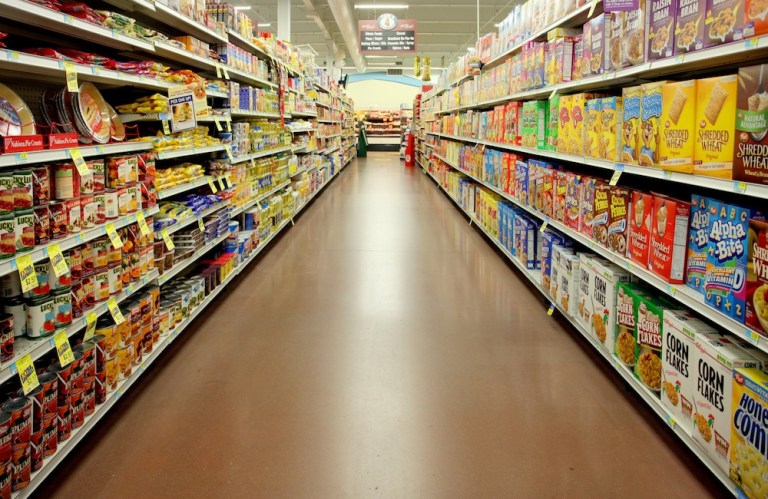
Until very recently, grocery was easily viewable as a static category in the United States. An extremely important one — since it is one of the few absolutely necessary categories that one can count on pretty much all consumers to spend in — but a fairly predictable one because of all that built-in necessity.
Which meant for a long time much of grocery looked and felt very much the same. Advances and changes have come along in the last 25 years. Walmart has become the biggest grocery retailer in the U.S. and the undeniable power of Costco is a testament to the rapid rise of wholesalers, but much has remained the same. Go to almost any grocery store (even a Walmart version), and you will start at the flowers and produce and basically be led counter-clockwise through the shopping experience.
The last five or so years, however, have been marked by a sudden rush to re-imagine grocery and markedly change that experience. Among startups, Instacart is the go-to example, while Amazon Fresh is by far the fastest growing enterprise level effort on grocery delivery. Delivery has been tried before, and it mostly failed in the late ’90s with the exception of Peapod, which is still going strong today.
Much of success of the latter-day emergence is credited to mobile — the last necessary step to make the process nimble enough to truly change customer behavior. Build a list, tap a button (leverage a saved payment method or digital wallet account), and groceries can be counted on to be en route. Mobile deserves the credit it gets, it is the inarguable indispensable tool of the on-demand economy — grocery included.
The rest is usually talked up in terms of tech upgrades — better backend systems and software, more efficient distribution networks, increased automation, better data gathering and interpretation. The short version takeaway of the ocean of advances can be summed up in five words:
Building a better customer experience.
Interestingly, though, for all the focus that goes into the tools necessary to build that better experience and an increasingly granular notion of what constitutes getting it right for consumers, customers themselves are still viewed somewhat statically, particularly when it comes to grocery.
If you ask the average person who they picture when you say the words “grocery store shopper,” most of those people are going to offer a description that includes the word “mom” and include a vision of a fairly suburban shopper.
And while, strictly speaking, that is not wrong — suburban moms do in fact buy the majority of our nation’s groceries (they also cook the majority of them and clean up the dinner dishes when everyone is done) — it is also increasingly incomplete and less helpful. As grocery is evolving, a closer look at how people and demographic groups are going to pursue it is evolving as well and giving retailers much more to think about in terms of building that elusive, sticky grocery shopping experience.
Millennials In the Aisles
While young consumers as a group are demographically famous for eating out more than most, the current crop of 18-34 year olds are somewhat different in this regard, according to a recent study by Retale.
Something about having come of age and entering the job market during the Great Recession seems to have enhanced their appreciation of eating in. Over a third of millennials grocery shop two or three times a month, and 30 percent grocery shop once a week. Millennials of all stripes have shopping habits that very closely resemble those of Gen-Xer moms.
And while 30 percent said they would cut their entertainment budget (which includes dining out) and 11 percent would cut their clothing budget, only 8 percent said they would modify their grocery spending.
Which isn’t to say they are opposed to saving money — far from it, in fact. Over a third describe themselves as “thrifty” shoppers, and 50 percent noted that cost was their first driving factor when making grocery purchases.
Unsurprisingly, they are also a technologically driven group. Thirty-four percent noted that the ability to use mobile technology to research or make their purchases drove their conversion decisions. A large percentage (43 percent) said they use mobile devices to clip digital coupons, and 50 percent reported using them to track savings. Once in the store, 58 percent of millennials report using their mobile device, and that number pops up to 62 percent when tracking older millennials (ages 25-36).
That older groups habits are unsurprising, given that they are the demographic most likely to be becoming parents at the moment and thus entirely obsessed with grocery-related savings.
Interestingly, though, the who of “who is going to the store” is also changing. Among those 25-36 year old parents, it isn’t just mom anymore. Dads are increasingly likely to head at least 50 percent of the trips to the grocery store per month, and be happy about doing it.
A majority of fathers polled in a separate study noted they enjoyed shopping with their children, particularly for groceries, as an opportunity to teach them about financial responsibility.
Changing Cultural Demographics
Also emerging within the closer look at how and who buys groceries are insights into how different groups shop, because as it turns out, even in an age and income range, other ethnic factors come prominently into play.
For example, a new study from Acosta Sales & Marketing indicates that as a group Hispanics are unique and under-targeted.